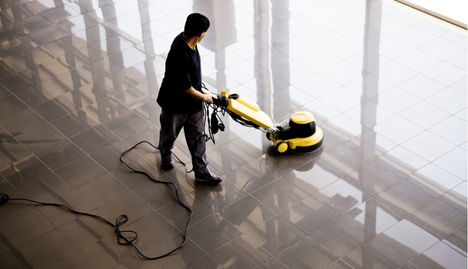Green Cleaning in Schools for Safe Learning Environments
Schools are busy, hectic environments where people from all walks of life interact daily. Cleanliness is vital in these high-traffic areas, but safety and sustainability also need to be taken into consideration.
Students can be exposed to harmful chemicals through traditional cleaning products, and many products produce toxic waste that's harmful to our environment. This is where green cleaning becomes important: this is an approach that focuses on the use of non-toxic, eco-friendly products and practices for safer, healthier schools.
What is Green Cleaning?
Green cleaning focuses on the use of environmentally friendly products and methods that minimise side effects on human health and the environment. These methods aim to reduce exposure to volatile organic compounds (VOCs), coarse disinfectants, and allergenic ingredients while still achieving extraordinary cleaning results.
Why Green Cleaning is Important in Schools
Children are specifically in danger when exposed to toxins and nasty chemicals. This is due to their undeveloped immune systems and their inability to remove toxins from their systems as quickly as adults can. Poor indoor air quality and chemical residue can lead to allergic reactions, asthma, and flare-ups of skin conditions.
Green cleaning in schools can also bring a host of benefits for teachers and staff. Fresher air, no irritants, and a healthier environment can lead to better concentration and fewer sick days for everyone.
Key Benefits of Green Cleaning in Schools
Improved Natural Environment: Non-toxic products reduce asthma symptoms and other health issues related to chemical exposure.
Better Internal Air Quality: Products with minimal or zero VOCs reduce air pollution inside classrooms, hallways, and offices.
Environmental Safety: Green cleaning assists in reducing water waste, reducing emissions, and reducing landfill impact.
Community Collaboration and Reputation: Parents are more likely to back and register their children in schools that are invested in student well-being and environmental responsibility.
How to Implement a Green Cleaning Program
Select the Best Products: Look out for cleaning products that have GECA (Good Environmental Choice Australia), Australian Certified Organic (ACO), or Living Choice certification. These symbols indicate that specific environmental and health standards have been achieved.
Leverage Microfibre Technology: Microfibre cloths and mops are very effective, and they are reusable.
Train Cleaning Staff: Green cleaning is not just about choosing the right products—it's also about implementing eco-friendly cleaning routines. Training your staff will be key to this.
Involve the School Staff and Students: Teachers, students, and administrative staff can help the program by reducing waste, recycling, and maintaining clean spaces.
Check Air Circulation Systems: Good airflow assists in the removal of airborne contaminants. It's always a good idea to invest in regular HVAC system maintenance.
Examine and Modify: Determine the effectiveness of your green cleaning routines. Explore the shortfalls and adapt based on what's working and what isn't.
Areas to Focus On
Classrooms: These should be deep cleaned on a daily basis using allergen-free, low-VOC concentration solutions.
Toilets: Use eco-friendly disinfectants that kill bacteria without emitting toxic fumes into the air.
Canteens and Food Areas: Ensure that all cleaning solutions used in these areas are food-safe and biodegradable.
Green Cleaning Supplies From Big Clean
Green cleaning in schools isn't a trend—it's a step toward safer, healthier education environments. By reducing exposure to toxic substances, increasing sustainability, and improving indoor air quality, schools can establish a place where both students and staff can flourish.
At Big Clean, we supply the best green cleaning solutions in Australia. Get in touch with us today if you'd like more information on products that would be highly effective in school environments.







